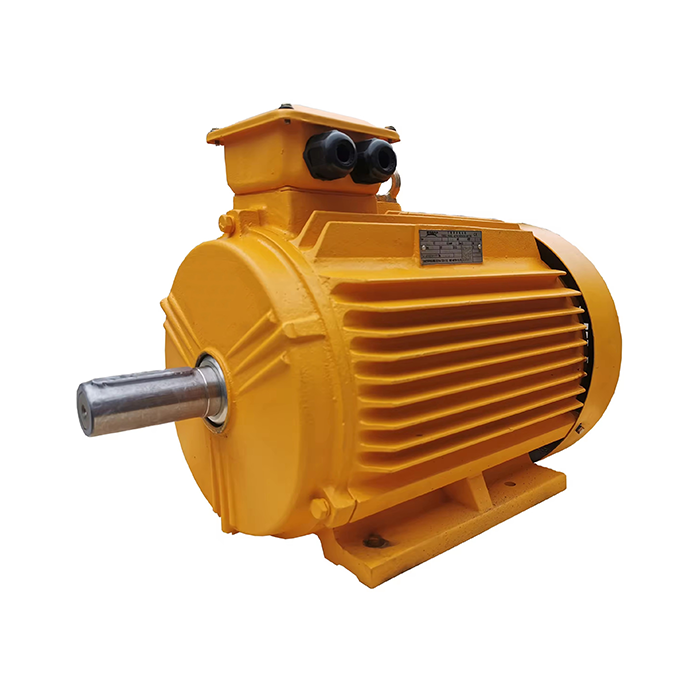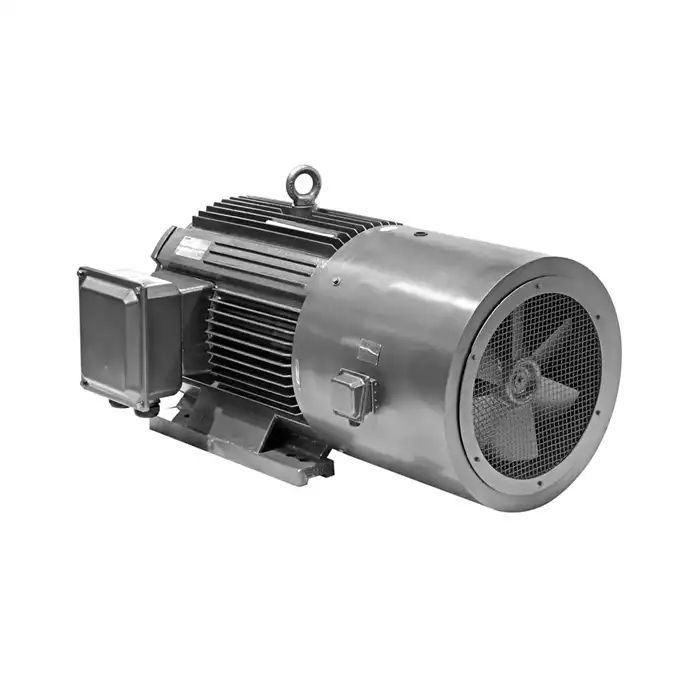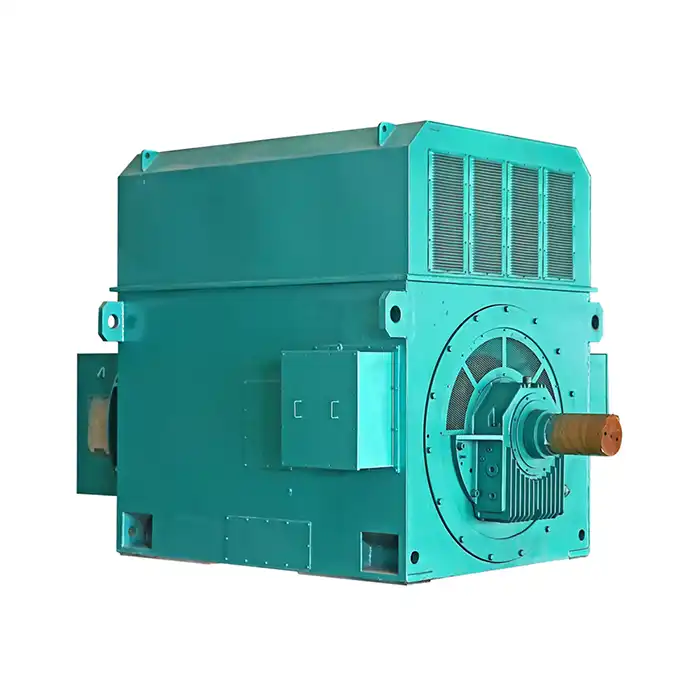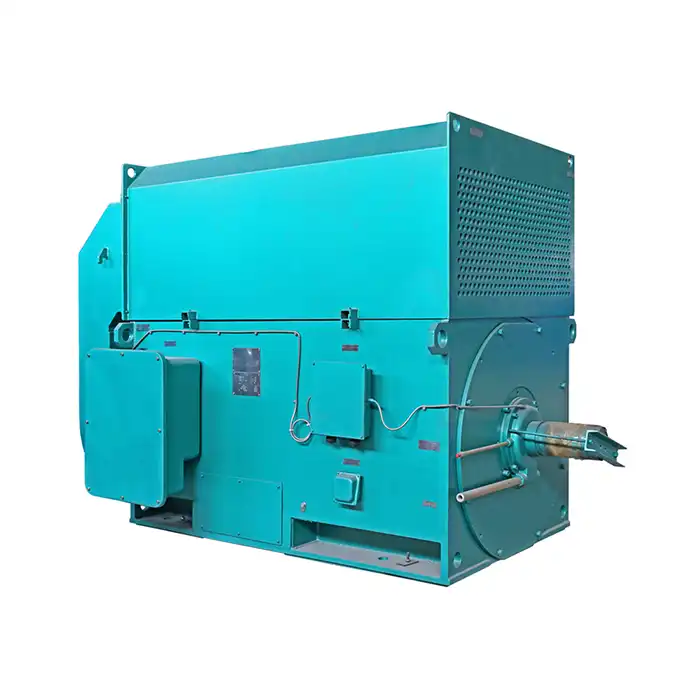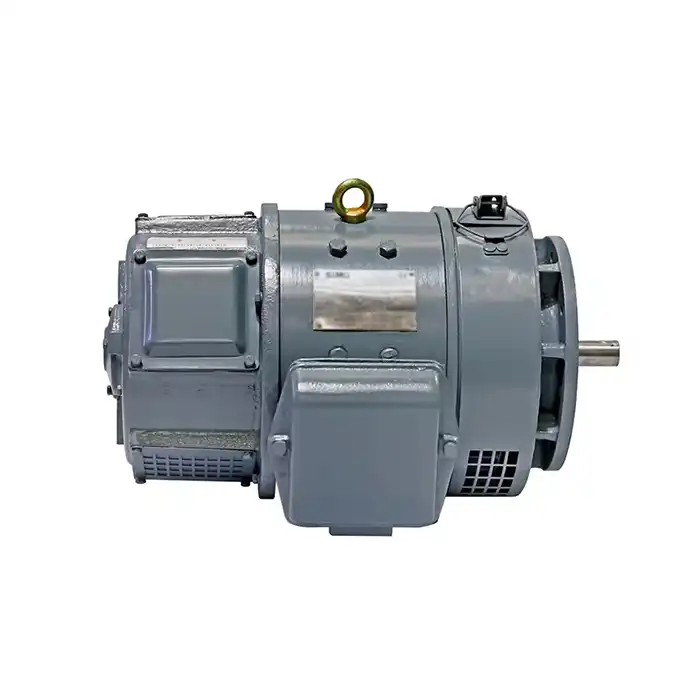The selection of the most suitable soft starter for a motor application requires careful consideration of power requirements, load characteristics, and operational conditions. It is possible to optimize energy utilization and significantly reduce mechanical stress while starting with a 100 hp soft starter when the scale is adjusted appropriately. You should be aware of the motor's duty cycle, starting torque requirements, and full load amperage to ensure it works with your existing electrical system and fulfills your operational demands.
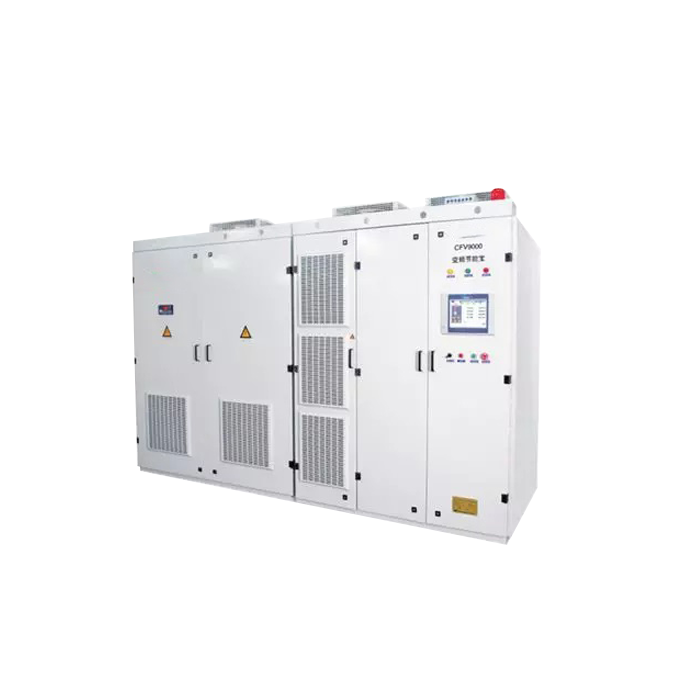
Adaptable motor power range :200-12000 kW
Application:can be used to drive fans, water pumps, textiles, papermaking, wire drawing, machine tools, packaging, food and various automated production equipment.
Advantage:air cooling, inverter control panel, built-in power transformer.
Understanding Soft Starter Fundamentals
Soft begin innovation revolutionizes how mechanical engines start their operational cycles. Not at all like conventional direct-on-line starters that subject engines to sudden voltage surges, delicate starters slowly slope up voltage to accomplish smooth speeding up. This controlled approach minimizes the beginning current reduction while securing mechanical components from shaking impacts.
Motor control frameworks benefit massively from this innovation. The microprocessor-based control calculations screen different parameters, including voltage, current, and torque all throughout the beginning grouping. Progressed units consolidate numerous beginning modes such as voltage incline, current constraint, and torque control to oblige differing stack conditions.
Industrial computerization situations especially esteem the accuracy these gadgets offer. Fabricating offices handling fragile materials or working with delicate hardware cannot bear the mechanical stuns related to ordinary beginning strategies. 100 hp delicate starters dispense with these concerns while amplifying gear life expectancy significantly.
Power Rating Considerations for Motor Applications
When deciding the suitable control rating for an engine, it's imperative to see past basically coordinating the drive necessities of the application. Different components must be considered to guarantee ideal execution and reliability.
Load Characteristics
The sort of stack is one of the most significant variables in measuring an engine. For example, high-inertia loads, such as huge fans or centrifugal pumps, require engines with distinctive details from constant-torque applications like transports or compressors. High-inertia loads require an engine with higher beginning torque and the capacity to handle shifting speed requirements without harming the system.
Ambient Operating Conditions
Environmental components play a critical part in engine execution. Temperature extremes, mugginess, and elevation all affect engine effectiveness and life span. When engines are worked at rises higher than 1000 meters, derating calculations are fundamental to account for decreased discuss thickness, which influences cooling and execution. Engineers must guarantee that the engine chosen will perform dependably under these conditions.
Variable Frequency Drives (VFDs)
In many applications, Variable Frequency Drives (VFDs) are used to control motor speed. However, some systems may benefit from combining a 100 hp soft starter with a VFD. This hybrid setup provides better protection against mechanical stress during startup while maintaining the precision control of speed offered by the VFD. It also enhances energy efficiency and helps extend the lifespan of the motor.
Starting Current Considerations
Motor beginning streams can change altogether, regularly extending from 150% to 400% of the motor's full-load amperage. Understanding this is basic for selecting fitting contactors and defensive gadgets inside the engine control circuit. These components must be appraised to handle the tall inrush current during startup without being damaged.
Application-Specific Sizing Requirements
Challenges in HVAC System Motor Sizing
HVAC frameworks regularly show one-of-a-kind challenges due to their assorted and variable control requirements. Commercial discusses taking care of units, for example, ordinarily highlight numerous engines that require distinctive control evaluations depending on the particular task they perform, such as controlling fans, pumps, or compressors. Appropriate measuring guarantees that these engines can work productively without overburdening or wasting energy. In applications where the framework needs to work continuously, the measuring must also account for obligation cycles and stack fluctuations.
Critical Applications in Water Treatment
In water treatment offices, pump control applications are imperative to keeping up reliable and solid operations. These frameworks regularly require engines that are not as it were energy-efficient but also unimaginably dependable, given their significance in keeping up the foundation. Any disappointment can disturb basic forms, so the unwavering quality of engine frameworks in these settings is of fundamental significance, regularly requiring engines with progressed security and monitoring features to guarantee continuous service.
Diverse Motor Configurations in Manufacturing
In mechanical situations like cars, aviation, and gadget manufacturing, the engine setups can be profoundly shifted. Each industry comes with its claim set of challenges—torque control, for illustration, plays a pivotal part in car assembly lines where accuracy is required for different applications. Moreover, lessening mechanical wear is pivotal in these situations, as it makes a difference in extending the life of hardware and guarantees that operations run easily without pointless downtime.
Food Processing and Hygiene Considerations
Food preparation offices have particular prerequisites beyond insignificant usefulness. In addition to keeping up tall levels of operational proficiency, gear utilized in these situations must meet rigid cleanliness guidelines to prevent contamination. Engines that drive transports, blenders, and other apparatus must be outlined for simple cleaning and resistance to natural conditions such as dampness or temperature fluctuations.
Power Management in Energy-Intensive Operations
Industries with high energy demands, such as textile manufacturing and wire drawing, benefit from technologies like 100 hp soft starters to reduce the peak demand charges. These devices help minimize the inrush current at startup, thus lowering the instantaneous power requirements and overall energy costs. This is essential for operations where high energy consumption is common, as managing energy costs can have a significant impact on the overall financial performance.
Technical Specifications and Performance Parameters
Modern soft starters incorporate sophisticated protection features addressing common motor failure modes. Overcurrent protection prevents damage from locked rotor conditions or mechanical binding. Phase loss detection immediately shuts down operations when the supply voltage becomes unbalanced.
Starting time adjustability from 1 to 120 seconds accommodates applications ranging from rapid-cycling machinery to high-inertia equipment requiring extended acceleration periods. Built-in bypass contactors reduce heat generation during normal operation while extending device lifespan.
Communication capabilities enhance integration with plant-wide automation systems. Modbus RTU interfaces enable remote monitoring and control, allowing operators to adjust parameters without accessing electrical panels. LCD displays provide real-time status information and diagnostic data.
Smooth acceleration profiles can be customized for specific load requirements. Linear voltage ramps work well for centrifugal loads, while current limiting proves beneficial for high-torque applications. Some units offer dual-ramp capabilities, combining multiple acceleration strategies.
Installation and Environmental Considerations
Modern delicate starters consolidate modern security highlights, tending to common engine disappointment modes. Overcurrent assurance avoids harm from bolted rotor conditions or mechanical failure. The stage misfortune location promptly closes down operations when the supply voltage becomes unbalanced.
Starting time adjustability from 1 to 120 seconds suits applications extending from rapid-cycling apparatus to high-inertia gear requiring amplified increasing speed periods. Built-in bypass contactors diminish the warm-up time during typical operation, while extending the gadget's lifespan.
Communication capabilities upgrade integration with plant-wide mechanization frameworks. Modbus RTU interfacing empowers further checking and control, permitting administrators to alter parameters without accessing electrical boards. LCD shows give real-time status data and symptomatic data.
Smooth speeding up profiles can be customized for particular stack prerequisites. Straight voltage slopes work well for centrifugal loads, whereas current restricting is advantageous for high-torque applications. A few units offer dual-ramp capabilities, combining different speeding up strategies.
Industry Applications and Benefits
Water treatment facilities rely heavily on pump control systems utilizing 100 hp soft starter technology. These applications demand exceptional reliability given their critical infrastructure role. Reduced voltage starter technology minimizes stress on pump impellers and mechanical seals, extending maintenance intervals significantly.
Transportation industry applications span railway systems, airport baggage handling, and shipping port equipment. Each environment presents unique challenges, including vibration resistance, temperature extremes, and demanding duty cycles. Mechanical wear reduction becomes paramount in these applications.
Healthcare facilities utilize soft starters in critical ventilation systems, water pumps, and backup power equipment. Reliability requirements in these applications often exceed standard industrial specifications. Quiet operation and minimal electrical noise help maintain sensitive medical equipment functionality.
Agricultural applications increasingly adopt soft starter technology for irrigation pumps, grain handling equipment, and livestock ventilation systems. Energy efficiency improvements directly impact operational costs in these price-sensitive markets.
Conclusion
Proper delicate starter measuring requires cautious assessment of engine control requirements, stack characteristics, and natural conditions. Victory depends on understanding the relationship between beginning current, speeding up time, and mechanical stretch decrease. Advanced, delicate starters offer advanced control calculations and security features that improve engine execution while lessening operational costs. Contributing quality hardware from experienced producers guarantees dependable operation and long-term value. The benefits of smooth increasing speed, decreased mechanical wear, and improved vitality proficiency make delicate starters fundamental components in modern engine control applications.
Why Choose XCMOTOR for Your 100 HP Soft Starter Requirements
XCMOTOR stands as a trusted 100 hp soft starter manufacturer committed to delivering exceptional power equipment solutions across diverse industries. Our comprehensive product line spans 200-12000 kW power ranges, accommodating everything from small pumps to large industrial compressors with unmatched reliability.
Our engineering team understands the complexities facing modern industrial operations. Each soft starter incorporates advanced features, including air cooling systems, integrated power transformers, and intuitive control panels designed for seamless operation. These innovations translate directly into reduced maintenance costs and improved operational efficiency.
Quality control measures throughout our manufacturing process ensure every unit meets stringent international standards. CE and CCC certifications demonstrate our commitment to safety and performance across global markets. Comprehensive testing procedures verify that each device operates flawlessly before leaving our facility.
Customer support extends well beyond initial equipment delivery. Our technical team provides expert guidance during selection, installation, and ongoing operation phases. Fast delivery options and 30-day return policies demonstrate our confidence in product quality while minimizing project delays.
Whether your application involves complex automation systems or straightforward pump control, XCMOTOR provides the expertise and equipment needed for success. Our dedicated support team remains available throughout weekends, ensuring assistance when you need it most. Ready to optimize your motor control systems? Contact us at xcmotors@163.com to discuss your specific requirements with our application specialists.
References
1. IEEE Standard 1566-2015: IEEE Standard for Performance of Adjustable-Speed AC Drives Rated 375 kW and Larger
2. NEMA MG-1-2016: Motors and Generators Standard - Part 31: Definite Purpose Motor Applications
3. IEC 60947-4-2:2019: Low-voltage switchgear and controlgear - Contactors and motor-starters - AC semiconductor motor controllers and starters
4. National Electrical Manufacturers Association: Application Guide for AC Adjustable Speed Drive Systems
5. Electric Power Research Institute: Motor Efficiency Guide - Industrial and Commercial Motor Applications
6. International Electrotechnical Commission: IEC 61800-2 Variable Speed Drive Systems - General Requirements



